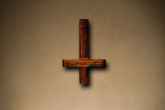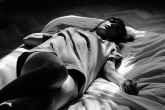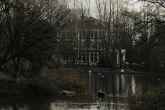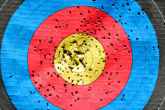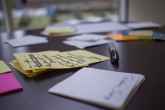Ghost Hunting: The Best Paranormal Devices Ranked
This article is more than four years old and was last updated in June 2022.
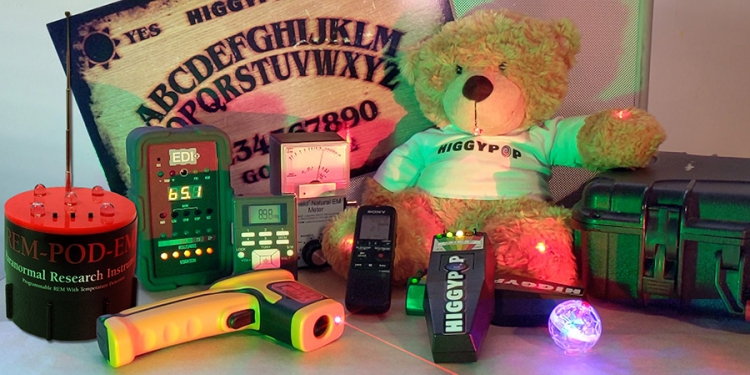
If you ever been on a public ghost hunting event, or seen paranormal teams searching for spooks on television shows, then you've probably noticed that vast array of ghost hunting devices that are used within the paranormal field. This paranormal equipment is the tools of ghost-hunting trade.
These gadgets often look very technical, have scientific sounding names, and use a lot of jargon to describe their operation. Perhaps you're new to the practice of ghost hunting, or you're just looking to update your kit bag, but how do you know which piece of equipment is the most reliable, accurate and user friendly?
To answer this question, the best tool you can possibly use during an investigation is your own senses: eyes, ears, nose and touch, or any device that can accurately mimic these senses such as a camera, audio recorder, thermometer or vibration sensor.
We've put together this guide to help you choose which device is right for you. There are so many different ghost hunting gadgets on the market that it would be impractical to try to review and rate every single one here. Instead we will explore the different types of functionality and detection methods that the most common types of device use.
Based on our hands-on experience with these gadgets, we will rate each type of device out of ten in three categories and give it an overall score:
Accuracy - how consistent the device's measurements are compared with devices capable of taking similar measurements.
Scientific Rigour - how sound the scientific basis for the operation of the device is.
Quality of Evidence - how useful the evidence captured by the device is.
This list is based on our own experience. All teams will have different methods, techniques and beliefs. So, this list might not be for everyone, but we hope it will help you find the most suitable paranormal tool for your next investigation.
Camera
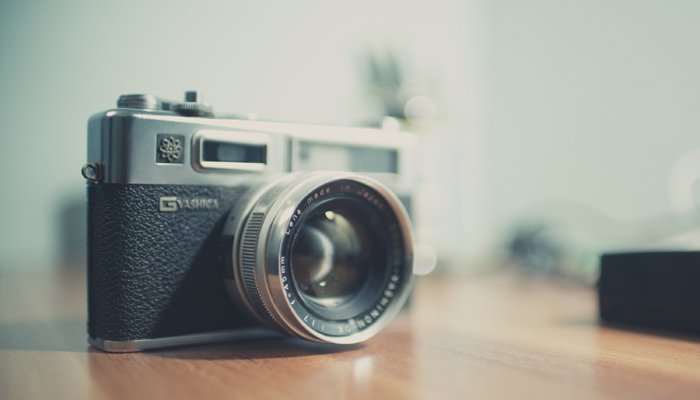
Victims of hauntings often report seeing apparitions, strange lights and dark shadowy figures, but very few report electromagnetic anomalies. So it makes sense to try to capture the evidence that has been reported to you using the same method it was originally experienced. If a witness reports seeing a figure, then you should try to recreate the conditions and see it for yourself with your own eyes. Seeing such a figure would be the ultimate supernatural experience, but it doesn't give you any evidence to take away, which is where a camera comes in.
Taking multiple photographs of an investigation allows you to accurately capture what the human eye can see. The camera is a device which literally mimics one of the humans senses. Therefore the scientific rigour of such a device is flawless. However, because ghost hunts are often conducted in low light levels, this can affect the accuracy of the device and the quality of the evidence you capture. Of course you can use a flash to overcome darkness, but this should really be avoided as you are essentially adding an additional and very bright light source into a location. This changes the conditions and means you are no longer recreating the conditions of the original sighting.
A physical camera such as a digital SLR or compact camera is a better choice than a mobile phone camera. While modern phone cameras are often easier to use and better at coping with low light, they often compensate for poor conditions by using photographic trickery. For example you will find that on new Android and Apple phones a function called HDR (high-dynamic-range imaging) is turned on by default. This function takes multiple photos in quick succession and averages them out to create a balanced image. This means it is not a true reflection of what could be seen at any single moment. For example a light could be caught in one of the multiple photos taken and gone in another, an object might move through the shot and appear semi-transparent, or an area of the photograph might appear lighter or darker than they really were in relation to each other.
Review Overview
Video Camera
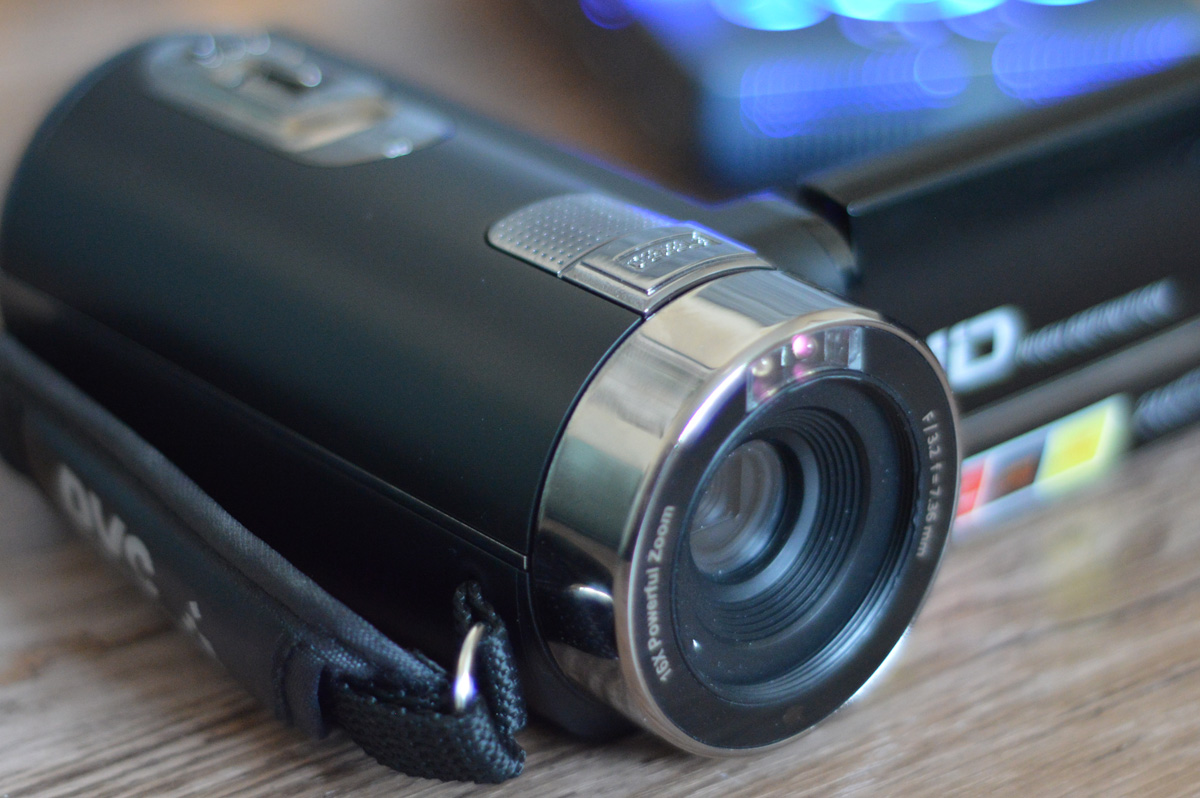
A video camera is also a very reliable device which will accurately capture what the human eye can see. The obvious benefit of using a video camera over a stills camera is that it's constantly capturing what's visible and it can be left unmanned to record.
We scored the accuracy of a video camera a little higher than a still camera, this is because when you're dealing with moving images there's less photographic trickery in play, so the captured image is more raw. This also increases the quality of evidence because rather than just having a still image of whatever you've caught, you will have a sequence of images. This can be used to verify that it's not just a photographic fluke or to help you debunk whatever it is you've caught by taking into account how it moved in/out of the frame.
You need to be aware that when filming in low light the camera will struggle and try to compensate, this often makes the footage grainy and the introduction of these artefacts can cause us to see shapes and patterns in the footage that aren't really there. Therefore when filming in a location with poor lighting, or of course when it's completely dark, it's better to use a camera with night vision.
The most common type of night vision camera is an infrared camera, it usually produces a monotone video or footage with a greenish tint. To achieve this type of night vision the camera relies upon an infrared illuminator. This is usually a small light above the lens, or a larger LED light mounted on the top of the camera. Either way, the light is invisible to the human eye. To you the room will still appear to be in total darkness, but to the camera the room is flooded in IR light. The problems with having a light mounted so close to the lens is that it creates a very narrow angle of reflection. This means if the light hits a dust particle close to the lens, it will reflect back into the lens and because it's so close will look like a large glowing ball - these are of course mistakenly called "orbs".
Another method of of night is a full spectrum camera. The difference between IR night vision and full spectrum is that, as the name suggest, full spectrum cameras can see the whole spectrum of light at once. Not only can it see normal visible light that our eyes can see, but it can also see infrared light and ultraviolet. This means when paired with an infrared illuminator it can work as both a night vision and regular camera at the same time. However when filming in a well lit environment you'll find the image has a pinkish hue as infrared is always present in just about every condition. A full spectrum camera is probably a better option for a ghost hunter, but you should remember that the camera will not be suitable for any other use, whereas traditional IR night vision cameras can switch between day and night mode.
Review Overview
Audio Recorder
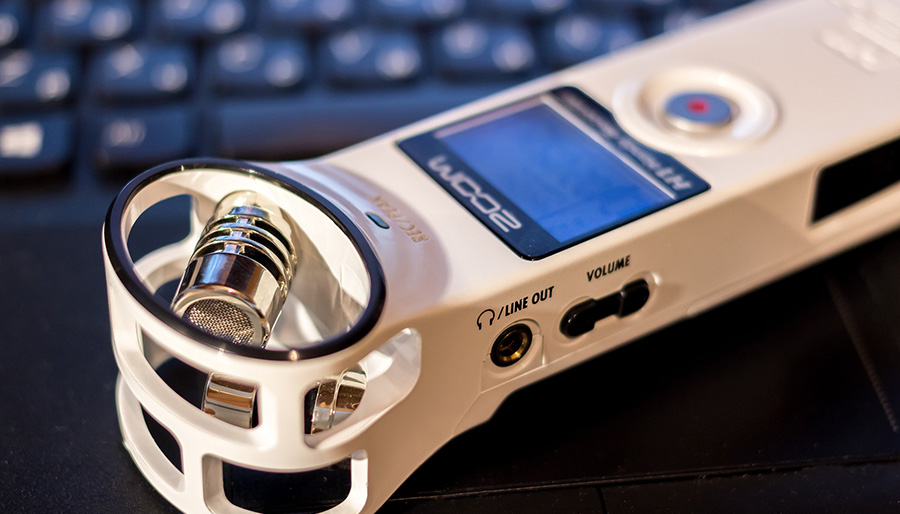
Photo: pixabay.com
An audio recorder is another gadget that mimics the human senses and allows us to create an audio log of investigations. It's much easier to place an audio recorder somewhere in a room and leave it recording throughout an investigation than it is to position and keep an eye on a video camera to log events.
Ideally you should be using a digital audio recorder, as old analogue devices increase the chance of noise in the recording, this could be in the form of unwanted hiss, pops and rumbling. Even the audio recorder on a mobile phone is fit for purpose in this case.
No matter what type of audio device you are using, be sure to set it to record in the highest possible quality. You should avoid any 'noise cut' features, as this will automatically boost, alter and manipulate the audio you are recording. It's a great feature for use as an audio recorder, but not so much on a ghost hunt. On top of this you'll probably find that most devices have an 'auto gain' feature turned on by default. This feature will automatically adjust the sensitivity of the microphone. If you shout into the recorder it will dip the microphone to accommodate, but when recording in a silent situation it will boost the gain on the microphone, pushing it to its most sensitive setting. This is great as it means you will hear really quiet sounds, but it will also mean that something that sounds very loud might have actually been very quiet if the audio hadn't been automatically boosted.
Automatic gain can also mean the struggling microphone amplifies the ambient sound so much that the recording consists of a lot of background noise in the form of hiss or low-end rumbling. In the same way as unwanted visual artefacts in a photograph or video can cause us to see things that aren't really there, unwanted noise in an audio recording can also lead to audio pareidolia. This is when the human brain tries to find patterns and familiar sounds in the chaos and misinterprets random sounds as voices.
The most rational and logical way to use an audio recorder during an investigation is to record a log. Should you hear any strange sounds, knocking, or voices you can play it back to review it. However, audio recorders are frequently used to try to capture EVPs (Electronic Voice Phenomenon). This is a method of spirit communication where spirit voices which were inaudible at the time are captured in the recording.
EVPs are very frequently captured on investigations and are sometimes very convincing as they appear to be saying clear and relevant words as responses to investigators' questions, but there is a lot of misinformation and pseudoscience associated with this investigation method, therefore we've marked down this device's scientific rigour score.
While we don't dispute that strange disembodied voices are often caught on audio recorders, claims that these words are originally spoken at a frequency higher or lower than the human ear can hear are untrue. Audio recorders are designed to pick up a range of frequencies that closely approximate the human ear, there's no need to record extraneous sounds that the device's user can't hear. Even if the frequency range of the microphone and the recorder were suitable to capture sounds outside of our hearing range, when the audio is played back, we still wouldn't be able to hear it as these devises don't alter the frequency of any of the sounds they capture.
The biggest problem with evidence captured using an audio recorder, whether it be knocks and bangs, or EVPs, is that the evidence is subjective with no visual frame of reference. A strange unidentifiable sound in a recording could have just been a fellow investigator who cleared their throat, or the sound of the recorder itself being moved across the table.
EVPs are also subjective. To the investigator a word or phrase might seem clear, but if the same clip is reviewed by someone else and is taken out of context by removing the investigator's original question from the recording, the reviewer will probably hear something completely different.
Review Overview
Thermometers
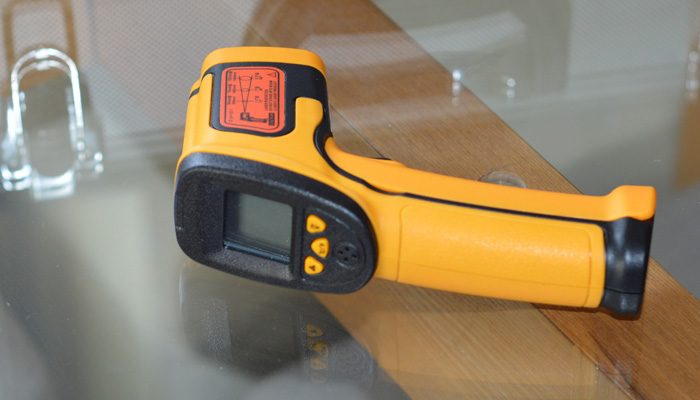
Victims of hauntings often report cold spots or chills in a room, therefore it's not a bad idea to test this with a thermometer. Once again this is another factor that our body's senses are aware of, so it makes sense to try to mimic that in an investigation.
The type of thermometer most commonly used on ghost hunts is a point and click infrared digital thermometer. These handheld gadgets have a laser sight which allows you to aim it at a certain point, then you press the trigger and a screen on the device instantly tells you the amount of heat being radiated from that object.
Point and click infrared digital thermometers are very accurate and reliable, but these devices are often incorrectly used as they can't tell you if someone is stood in a cold spot. The device can't measure air temperature, so if someone feels cold and you point it at them you'll only be reading their body temperature, not the temperature of the air around them.
Thermal imaging cameras work in the same way as point and click thermometers but give the user a real-time overview of the relative temperature difference in their surroundings. Although the output of this device is more useful and can be recorded as a video file for evidence, its use is still prone to the same limitation as the point and click version - it cannot measure air temperature. Users should also be aware that their own body heat might reflect back at the camera when stood in front of a reflective surface.
Thermometers designed for ghost hunts are often built into other ghost hunting multi-tools, such as the EDI+, Mel Meter and the second generation REM-Pod. These devices usually flash a red or blue light, or make an audible tone to indicate a sudden change in temperature. However, we've rigorously tested all of these devices and found that while they do trigger if there's a temperature change, they are very inaccurate. When compared to home heating thermostats, glass thermometers, or cheap digital thermometers.
We compared one such multi-tool to these three different types of thermometer and found it to be five degrees wrong, even after being left in the room for an hour. We also tested the devices with sudden and extreme drops in temperature by moving them from a heated area to a fridge and found them to be very unresponsive. One device only dropped two degrees in ten minutes when moved from 20°C to 5°C.
So, if you're really interested in the ambient temperature and detecting cold spots, then rather than spending huge amounts of money on a ghost hunting gadget, buy yourself a cheap digital thermometer or a glass thermometer.
Review Overview
Geophone
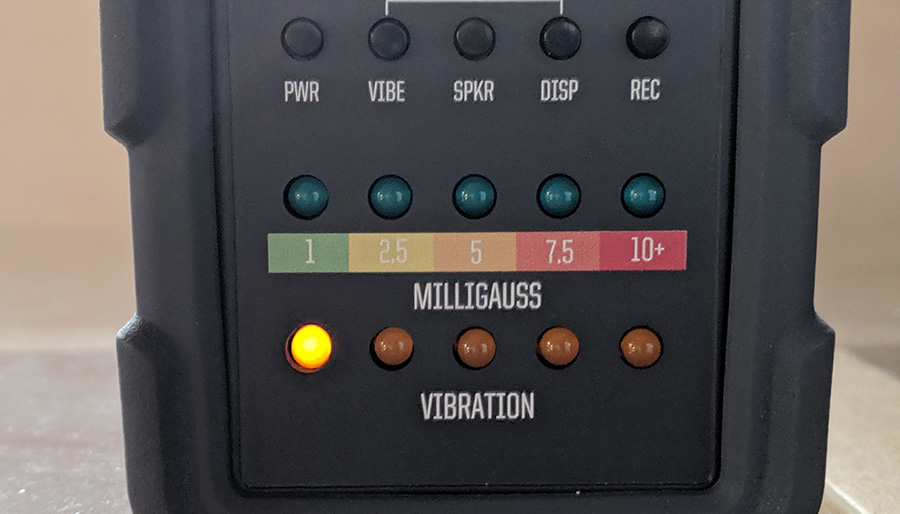
A geophone is the last device on our list that approximates human senses. It's not that common as a standalone device, but the EDI+ multi-tool has a geophone function built in. On a ghost hunt it basically mimics our sense of movement and also to some extent hearing if knocks and bangs are present. It measures movement in the surface it is sat on an indicates its intensity through a display of lights or audible tones.
Through testing and use in the field, the geophone is a very accurate and sensitive tool. When used where knocks and bangs are present it is useful for indicating the intensity of the sound. The more intense the vibration, the more lights will light on the device. This takes away the subjectivity of the human ear and eliminates the inconsistencies of knocks captured by audio devices and cameras which could be using auto gain features.
The geophone is useful as it can be placed a long distance away, yet investigators can still see if its lights flash. This reduces the likelihood that someone present is moving and causing the device to trigger. When placed on a surface such as a table it can give a visual representation of knocks and bangs.
The only issues we've found with the geophone on the EDI+ is that the first light always flickers very slightly even when it is placed on a flat surface. It's an annoying trait but you'll get used to this fault and will learn to ignore it and distinguish it from genuine vibrations.
While this is a useful device during an investigation, it doesn't present the user with any useable information or evidence. Most devices simply light a scale of five lights to indicate the strength of the vibration.
Review Overview
Advertisement ‐ Content Continues Below.
EMF Meters

Electromagnetic Field Meters are by far the most commonly used ghost hunting gadget. They can be bought in the form of the hugely popular K-II Meter, as well as many cheaper alternatives. You'll also find EMF meters built into multi-tool gadgets like Mel Meters and EDI meters. A more expensive version of an EMF meter is a TriField Meter which measures a much wider band of the electromagnetic spectrum, gives a better indication of field strength and allows the user to more easily establish what the source of the EM spike might be.
K-IIs, EDIs and Mel Meters are all fairly accurate and all give similar results, but let's be honest, no one really cares what the actual strength of the field is in milligauss and most investigators wouldn't understand what that means. After all, the way EMF meters are used now is very different to how they were first used by investigators. They were originally used to try to rule out electromagnetic fields during an investigation as strong or heavily fluctuating fields can cause people to experience certain haunting-like phenomenon, such as seeing light anomalies, feeling a perception of a presence, or the sensation of being touched.
However, in recent years there's been a switch in belief amongst paranormal investigators who now believe that electromagnetic emissions are a product of a haunting rather than being a possible cause for misdiagnosed hauntings. This has lead to the unsubstantiated belief that ghosts can emit their own electromagnetism or disrupt the ambient electromagnetic field.
The connection between spirits and EMF is based on the fact that the human brain uses tiny electronic impulses to send signals around our bodies. Some believe that this energy can live on as a disembodied consciousness after death outside the body. Even if this were true, an EMF meter isn't able to detect "brainwaves" because they have a frequency that is much lower than the minimum threshold of an EMF meter.
Review Overview
REM-Pods
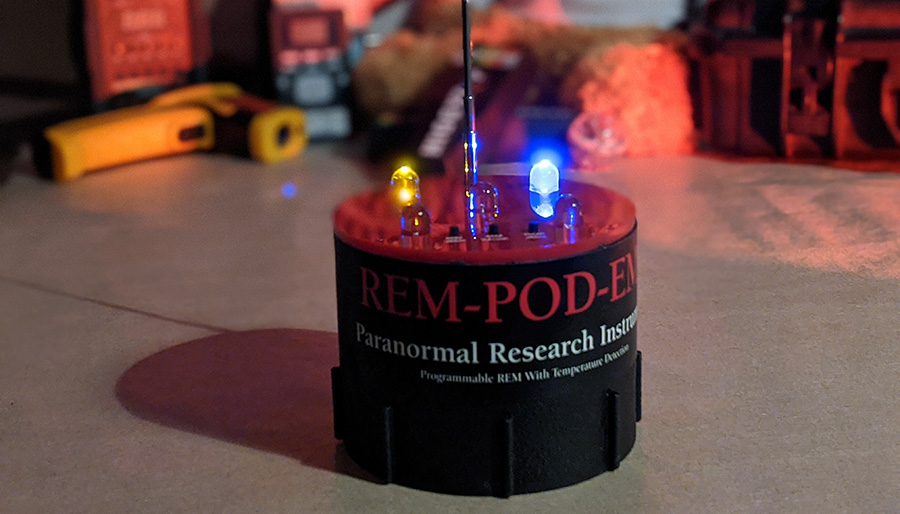
REM-Pods are not too dissimilar to EMF meters in that their operation revolves around changes in the electromagnetic field, but the science behind REM-Pods actually makes them a lot less flakey as REM-Pods radiate their own EM field. You may have seen the cylindrical device with an antenna sticking out of the top known as a REM-Pod, but for the purpose of this review, we're not just talking about REM-Pods but also any other device that detects anomalies by radiating its own EM field. There are countless devices with this feature including the second generation Mel Meter and the BooBuddy ghost hunting bear.
The problem with classic EMF meters is that they can't detect any electromagnetic field around a human body, even when the device is held against the skin. If they can't detect a living human, then why should they be able to detect a spirit?
The REM-Pod doesn't suffer from this issue, it can be triggered by a human or animal getting too close to it. This is because they radiate their own EM field, this allows them to detect anything that enters into the field. When something triggers the device its lights flash and it makes an audible tone.
The fact that a REM-Pod can detect a living thing doesn't mean that it can detect a spirit, after all no one knows what a spirit is or how to detect one, but if a spirit is capable of taking on a physical form in the slightest way, then it may be able to trigger a REM-Pod.
REM-Pods are pretty accurate, you can test their responsiveness with your own hand, but they are prone to giving false positives due to things like mobile phones, walkie talkies, and interference from things which might be beyond your control like baby monitors, radio transmissions and even fluorescent lights in neighbouring buildings.
Review Overview
Electronic Speech Synthesis
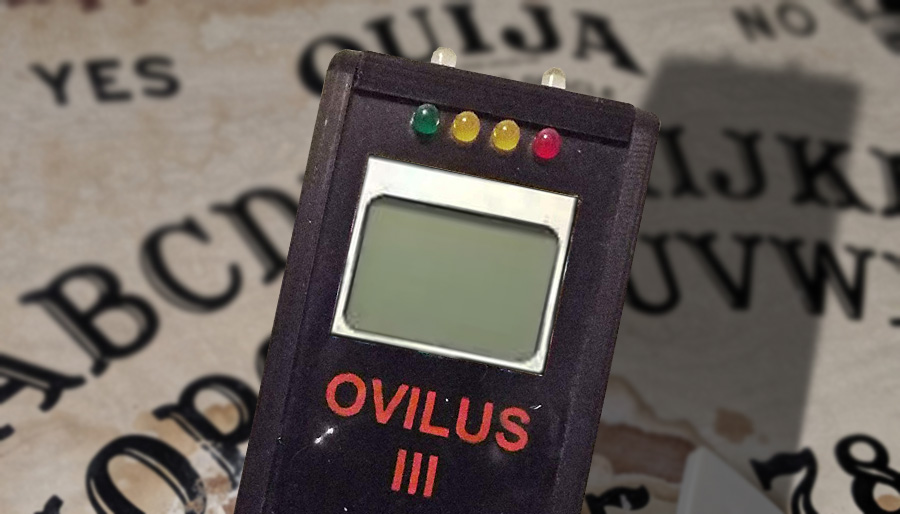
These types of devices work as either random word generators, or by generating random sounds using a bank of phonetic sounds or word elements. Gadgets that fall into this category include the Ovilus series of devices and Poltercom. Supposedly spirits are able to interfere with the software and affect the random nature of these devices to cause them to speak out the word they want to communicate, or to form the words they are trying to communicate using the bank of sounds.
They can do this by manipulating various sensors built into the gadget. These sensors vary by device but are usually a combination of either temperature, pressure, humidity, and electromagnetic sensors. The device uses the signal from these sensors as a key to generate a random number and this number is used to reference the database of words/sounds.
The biggest problem with this type of device is that there is no evidence to suggest that after death humans naturally acquire the necessary skills that allow them to interfere with the random word generation algorithm of an electronic speech synthesis tool or to control and alter the electromagnetic or atmospheric conditions around them in order to give a response through a device. These are clearly skills we don't possess in life.
Thinking about it logically, how would you even learn to communicate in this manner? Perhaps a 0.1°C increase in temperature means "yes" and a 0.1°C decrease means no. Then a 4°C increase for "murder", 7°C decrease for "victim"... see what we mean? How could it possibly work?
Review Overview
SLS Camera
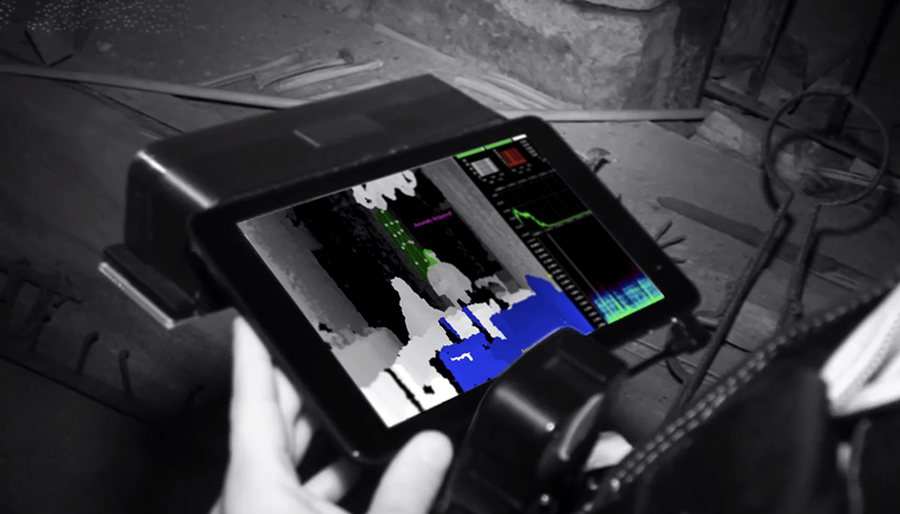
SLS cameras build up a three dimensional model of their view using an invisible infrared laser grid that it projects. This structured grid of laser dots is what gives the device its name SLS, or Structured Light Sensor. The technology was developed for the gaming industry and the camera's software is designed to spot 3D human-like figures in its field of dots and displays them on screen by overlaying a bright green stickman on the image. The reason this technology is used by ghost hunters is that they believe the software can also detect objects that are invisible to the naked eye.
Like a lot of ghost hunting gadgets, this belief is based on false assumptions. The camera doesn't "see" in the traditional sense, it is just designed to find a 3D human shape in its field of view. For the camera to detect an object it needs a physical form that the IR light will hit and reflect off of back to the camera. So, basically if a ghost manifest into a solid apparition and is stood in front of you, this camera would see it... but so would you or a normal camera.
It should be obvious to paranormal investigators that these devices simply expect to see one or more human in their field of view and it will draw a stickman over anything even remotely human shaped and track its movement. The give away is the fact that the stick figures of ghosts that the camera draws are often very erratic. They twitch and dance around. They're often not in scale with their surroundings, making them look too small, too big or as if they're floating in the air. They even spontaneously change position and size.
Since SLS cameras show a human form pretty much anywhere you point them, the quality of the evidence is worthy of a zero, as is its accuracy because the device's software is designed to find the human in its field of view, when there isn't one it simply does a best match and fails. The scientific rigour deserves one point because the device could have some uses in an investigation if used in certain conditions i.e. mounted on a tripod so that it is kept static and in a room with no movement. It would then be a valid way to detect movement within that space... but again, the movement would have to be physical and therefor you or a normal camera would be able to see it anyway.
Review Overview
Spirit Box
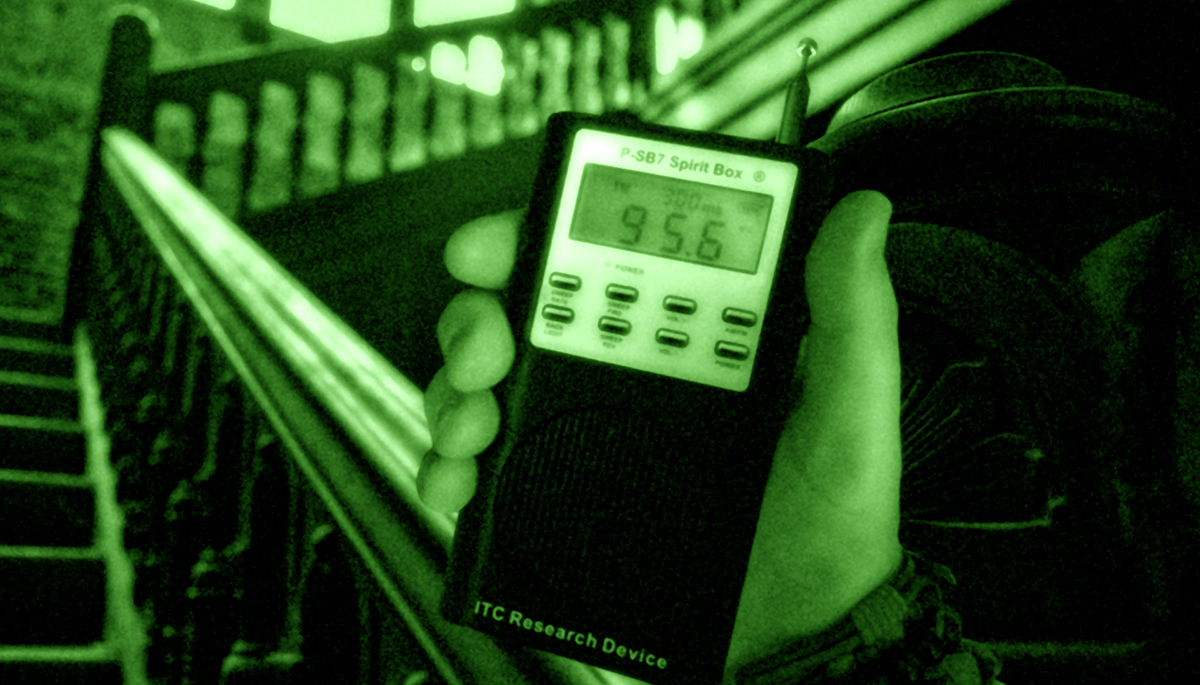
A spirit box is essentially a modified radio that rapidly scans through the AM, MW and FM radio spectrum, as it does the sounds of white noise and fleeting snippets of radio broadcasts can be heard. Some spirit boxes have various settings which allow you to tweak which bands the device scans through and how much of each frequency step you hear, this usually ranges from a hundredth of a second up to a second or more. It's believed that spirits are able to change or influence these bursts of audio in order to form sounds, words or even sentences.
Unless you are in a cave or well shielded building, you will almost certainly hear fragments of speech and music from radio stations, but some paranormal researchers prefer to put their spirit box inside a small bag which acts as a Faraday cage, this filters out all of the electromagnetic spectrum, which means that radio broadcasts don't make it to the device. In this case it is more likely that any voice which is heard is a result of paranormal contact.
As with other forms of audio spirit communication, you should bear in mind that audio pareidolia may be playing a part in what you're hearing. This is where the mind simply hears what it expects to hear. If you do hear a voice in your recording, it's best to isolate the answer from the question and play it to someone out of context for a second opinion.
Like other devices on this list, there's no understanding or even theory to explain how human spirits are able to manipulate radio waves to produce sounds after death. However, despite its flaws, many teams are able to obtain seemingly intelligent responses to their questions using this sort of device.
Review Overview
Mobile Phone Apps
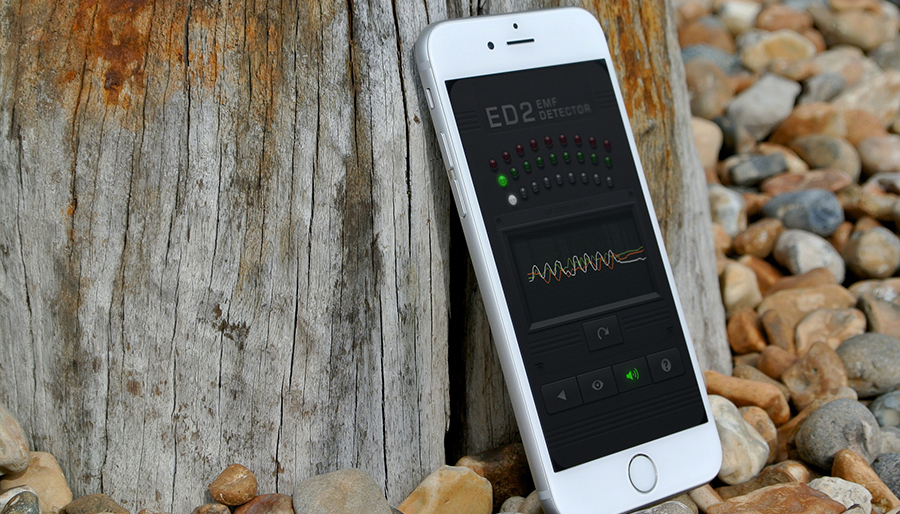
There are hundreds, if not thousands of mobile phone apps available on the app stores which approximate the behaviour of physical ghost hunting devices. Apps can be a cheaper option than buying the real thing, and depending on your phone can be as accurate - although as mentioned above, the accuracy of the physical devices should also be questioned.
Mobile phones don't have the exact same sensors as the gadgets mentioned above, but the software relies on the phone's sensors including compass, magnetometer and accelerometer, and even internal thermometers.
This can allow your phone to get a rough estimate of electromagnetic field strength, as well as other atmospheric conditions such as temperature and ambient barometric pressure. Although these sensors might not primarily be designed for this purpose, they are able to detect spikes and sudden changes to some extent. How well they work varies by manufacturer, handset and price point.
In order to put your trust in mobile phone apps, you really need to have faith in their physical counterparts, many of which we gave low scores on the list above. A software version of these devices isn't going to be any better and likely has more limitations.
These limitation and inaccuracies are reflected in our score below, but the rank for apps does skew slightly higher because phones can be useful during investigations.
As we said previously, you have to be careful when using a mobile phone's camera on an investigation because of features like HDR which can cause anomalies in photos in low light levels, but camera phones aren't bad and are certainly better than having no camera at all. If you choose to use one, turn off the flash as this will increase the chances of catching dust particles in photos/video which can be mistaken for orbs. If you can, turn off any features like HDR, which might be on by default on newer phones.
Another app that is perfectly acceptable to use on a ghost hunt is the audio recorder, which is a standard feature of most phones. This will allow you to record an audio log of your investigation and is just as good as any digital audio recorder in the case of most phones - it can even be used to conduct EVP sessions.
Review Overview
Society For Psychical Research's Recommendations
One of the oldest paranormal groups in the world, the Society for Psychical Research, formed in 1882 and amongst their members were famed paranormal investigators like Harry Price, Maurice Grosse and Guy Lyon Playfair.
The organisation's guidelines clearly state electronic ghost hunting devices are not an effective way of investigating a haunting. Their guidelines are publicly available and published in a short book entitled, 'Guidance Notes for Investigators of Spontaneous Cases' by Steven T. Parsons.
In the book, the SPR advises using nothing more than a few simple tools and pieces of equipment when investigating the paranormal. They accept that today an audio recorder is a valid substitution for a notebook.
SPR's suggested kit list:
• Notebook
• Wristwatch
• A camera
• An audio recorder
• A torch
• Sensible clothing
• Food and other refreshment
Related Content
Daily Horoscopes
You May Also Like







